#sapiens a graphic history
Text
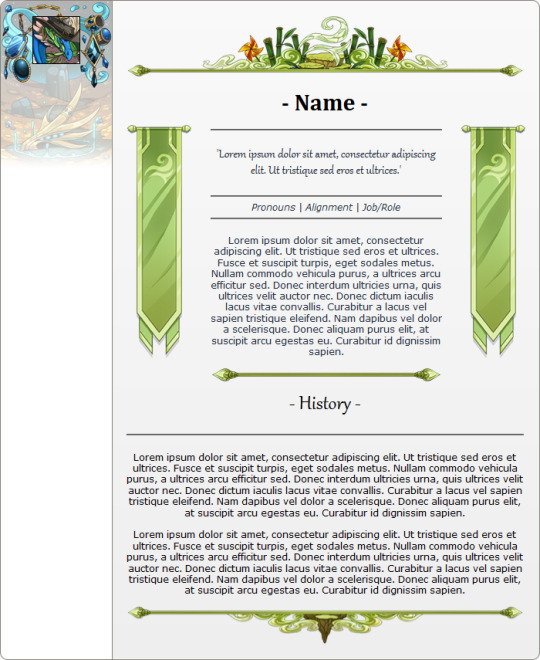
I have a vague memory of someone asking me for this bio code at one point, and since I'm redoing my bios and won't be using this anymore myself, here it is as free-use for everyone <3
Graphics are from Osiem's gorgeous bio resources
yes you can edit it as much as you like
no I don't need to be credited for the coding or anything, it's fine ^^
Coding can be found under the cut! It works both with or without vistas ^^
[center][img]https://dl.dropboxusercontent.com/s/kk5kaag52acu28a/windtop.png[/img]
[font=Cambria][size=7][b]- Name -[/b][/size][/font]
[columns]
[img]https://dl.dropboxusercontent.com/s/2623e2f92xw1s9r/windv2.png[/img]
[nextcol]
[center]-----
[font=Gabriola][size=5]'Lorem ipsum dolor sit amet, consectetur adipiscing elit. Ut tristique sed eros et ultrices.'[/size][/font]
-----
[i]Pronouns | Alignment | Job/Role[/i]
-----
Lorem ipsum dolor sit amet, consectetur adipiscing elit. Ut tristique sed eros et ultrices. Fusce et suscipit turpis, eget sodales metus. Nullam commodo vehicula purus, a ultrices arcu efficitur sed. Donec interdum ultricies urna, quis ultrices velit auctor nec. Donec dictum iaculis lacus vitae convallis. Curabitur a lacus vel sapien tristique eleifend. Nam dapibus vel dolor a scelerisque. Donec aliquam purus elit, at suscipit arcu egestas eu. Curabitur id dignissim sapien.
[img]https://dl.dropboxusercontent.com/s/k1b4ynhewlhqjdz/windmidsmall.png[/img][/center]
[nextcol]
[img]https://dl.dropboxusercontent.com/s/2623e2f92xw1s9r/windv2.png[/img]
[/columns]
[font=Gabriola][size=7]- History -[/size][/font]
-----
Lorem ipsum dolor sit amet, consectetur adipiscing elit. Ut tristique sed eros et ultrices. Fusce et suscipit turpis, eget sodales metus. Nullam commodo vehicula purus, a ultrices arcu efficitur sed. Donec interdum ultricies urna, quis ultrices velit auctor nec. Donec dictum iaculis lacus vitae convallis. Curabitur a lacus vel sapien tristique eleifend. Nam dapibus vel dolor a scelerisque. Donec aliquam purus elit, at suscipit arcu egestas eu. Curabitur id dignissim sapien.
Lorem ipsum dolor sit amet, consectetur adipiscing elit. Ut tristique sed eros et ultrices. Fusce et suscipit turpis, eget sodales metus. Nullam commodo vehicula purus, a ultrices arcu efficitur sed. Donec interdum ultricies urna, quis ultrices velit auctor nec. Donec dictum iaculis lacus vitae convallis. Curabitur a lacus vel sapien tristique eleifend. Nam dapibus vel dolor a scelerisque. Donec aliquam purus elit, at suscipit arcu egestas eu. Curabitur id dignissim sapien.
[img]https://dl.dropboxusercontent.com/s/x70o1tgtwji443a/windbottom.png[/img][/center]
73 notes
·
View notes
Text
Obsessed with the way Sapiens: A Graphic History handled trans people actually. I feel like it’s something I could show my conservative grandmother that she could understand.
159 notes
·
View notes
Text
Book Haul March 2024
New Books
My First And Only Love
Pod Svatou Horou
The Painter's Daughters
Hardy Women: Mother, Sisters, Wives, Muses
Homecoming
The Secrets of Blythswood Square
Crypt: Life, Death and Disease in the Middle Ages and Beyond
Poor Things
In Memoriam
The Bride of Death
Death on the Lusitania
The Will of the Many
Rites of Passage: Death and Mourning in Victorian Britain
Shakespeare's Sisters: How Women Wrote the Renaissance
The Case of Cem
Second-Hand Books
Beatrix Potter: The Complete Tales
Samantha Saves the Day
Iron Widow
The Man in the High Castle
The Wind Knows My Name
The Ice Palace
My Brilliant Friends
Shanghai Girls
Wild Beauty
Convenience Store Woman
A Great and Terrible Beauty
Rebel Angels
Sapiens: a Graphic History, Volume 1 - The Birth of Humankind
Body Rose
The Marvels
River of Smoke
The Bedlam Stacks
Saint Edith Stein: A Spiritual Portrait
Esther's Inheritance
Oryx & Crake
The Year of the Flood
The Cairo Trilogy
The Country Diary of an Edwardian Lady
Snow in May: Stories
A Writer At War: Vasily Grossman With The Red Army 1941-1945
If on a Winter's Night a Traveller
2 notes
·
View notes
Text
More than 57,000 years have passed since Paleolithic humans stood before the cave wall, with its soft, chalky rock beckoning like a blank canvas. Their thoughts and intentions are forever unknowable. But by dragging their fingers across the rock and pushing them into the cave wall, these creative cave dwellers deliberately produced enduring lines and dots that would lie hidden beneath the French countryside for tens of thousands of years.
Now, scientists have discovered that these arresting patterns are the oldest known example of Neanderthal cave engravings.
Authors of a study published Wednesday in PLOS One analyzed, plotted and 3D modeled these intriguing markings and compared them with other wall markings of all types to confirm that they are the organized, intentional products of human hands. The team also dated deep sediment layers that had buried the cave’s opening to reveal that it was sealed up with the engravings inside at least 57,000 and as long as 75,000 years ago—long before Homo sapiens arrived in this part of Europe.
This find, supported by the cave’s array of distinctly Neanderthal stone tools, identifies Neanderthals as the cave art creators and adds to growing evidence that our closest relatives were more complex than their dim caveman stereotype might suggest.
“For a long time it was thought that Neanderthals were incapable of thinking other than to ensure their subsistence,” notes archaeologist and study co-author Jean-Claude Marquet, of the University of Tours, France. “I think this discovery should lead prehistorians who have doubts about Neanderthal skills to reconsider.”
La Roche-Cotard is an ancient cave nestled on a wooded hillside above the Loire River. It was first uncovered in 1846 when quarries were operated in the area during construction of a railroad line. When it was first excavated in 1912, the array of prehistoric stone implements and cut-marked and charred bones of bison, horses and deer within revealed that Paleolithic hunters had frequented the site many thousands of years earlier.
Scientists first noted the finger tracings, with their organized appearance, as early as the 1970s. Beginning in 2016, the authors of the new study diligently plotted the various distinct panels and created 3D models for comparisons with other known examples of Paleolithic engravings. They also identified the cave’s many other wall markings made by the claws of animals, like cave bears, and by metal or other implements during modern incursions into the cave after 1912. Marquet says this process helped to show that the engraved panels were created in a structured and intentional manner. “These panels were not produced in a hurry, without thought,” he says.
The results also suggested that the designs were created by human hands, working the soft chalk wall, a material known as tuffeau, made of fine quartz grains and ancient mollusk shell fragments. The rock is permeable and covered with a fragile sandy-clay film.
“When the tip of a finger comes into contact with this film, a trace is left in the shape of an impact; when the tip of the finger moves, an elongated digital trace is left,” Marquet says. He knows this process firsthand. The team reproduced this method in a nearby cave made of the same type of rock. They marked walls using tools of bone, wood, antler and stone, as well as with their fingers, which produced engravings very similar to the ancient examples.
Co-author Eric Robert, an archaeologist at the National Museum of Natural History in Paris, says the graphics are impossible to interpret because they were made by a vanished people for viewing by their contemporaries.
“These images are not for us, and we do not have the keys to understanding their meaning, their possibly diverse and multiple functions,” he says.
Scientists know that the cave’s assemblage of discarded stone tools are of the Mousterian technology, sophisticated flake implements that are typically associated with Neanderthals. This suggests the cave was in use exclusively by Neanderthals, who in turn created the carvings on the walls. However, the authors note they can’t establish a direct relationship between those discarded tools and the engravings.
But another strong line of geological evidence comes from analyzing nearby sediments. During the Paleolithic, the Loire River, once closer to the hillside, flooded the cave numerous times and helped to carve out parts of it. Eventually those floods deposited thick sediments that, aided by erosion from wind and the hillside above after the river changed course, completely sealed off the cave. Clear evidence remains showing how layers of sediment were put down over the years, which would have completely covered the slope and cave entrance to a depth of more than 30 feet.
This covering persisted in place until 1846, when material was extracted for the railroad embankment, exposing the cave entrance. The sediments above and around the cave entrance, part of the layers that covered it before 19th-century excavations, were dated by optically stimulated luminescence dating, which can determine how long it has been since grains of sediment like quartz were exposed to daylight. A total of 50 sediment samples collected showed the cave was very likely sealed up at least 57,000 years ago, well before humans lived in this part of France. Previously, the oldest cave engravings attributed to Neanderthals were an abstract cross-hatching pattern found in Gorham’s Cave, Gibraltar, and dated to some 39,000 years ago.
Robert notes that several lines of evidence—the presence of Neanderthal tools, the geological evidence and the analysis of the engravings themselves—converge to demonstrate that the cave walls were adorned by Neanderthals.
“The authors present as convincing a case as can be made from a site disturbed by early excavations that the animal and human marks on its walls were left long before the arrival of our own species in Europe,” says archaeologist Paul Pettitt of Durham University in England, who wasn’t involved with the research. “Given that the cave’s archaeology is exclusively indicative of Neanderthals, with no evidence of subsequent Upper Paleolithic occupation, presumably because the cave was by this time inaccessible, this provides strong indirect, cumulative evidence that Neanderthals produced the finger markings.”
Humans from our family of ancestors began expressing themselves visually a very long time ago; Homo erectus carved zigzag patterns onto a shell more than half a million years ago. A series of handprints and footprints, which may have been deliberately placed by hominin children some 200,000 years ago, has been found on the Tibetan Plateau.
Neanderthals, or Homo neanderthalensis, may also be responsible for the world’s oldest known cave paintings. Pettitt was part of a team that found 65,000-year-old paintings in three Spanish caves that they attribute to Neanderthal artists. The early humans left red pigmented designs by drawing around their hands or pressing stained fingertips to the walls.
Examples of Homo sapiens’ very different style of cave art appear later. A purplish pig found on the walls of a cave hidden in a highland valley on the Indonesian island of Sulawesi was painted an estimated 45,500 years ago. If that date is correct, the Leang Tedongnge cave could be the earliest known work of figurative art, in which painters recreate real-world objects rather than producing abstract designs. The collections at Spain’s El Castillo cave and France’s Chauvet cave, where sophisticated lions and mammoths were painted perhaps 30,000 to 40,000 years ago, are notable early examples of this complex, figurative art that is unlike anything Neanderthals are known to have produced—at least so far.
Report this ad
But that distinction doesn’t necessarily mean that Neanderthal creations should be regarded as products of simpler minds or thought processes. Robert believes that comparisons between Neanderthal and Sapiens traditions aren’t necessary. For each species, he believes, the appearance of prehistoric carvings and paintings is less about when people were capable of making them and more about when social dynamics created a need for them at a specific time—even if those needs are a mystery to us today.
Brian Handwerk is a science correspondent based in Amherst, New Hampshire.
2 notes
·
View notes
Text
The Manga Review, 5/20/22
This year’s Eisner nominations have just been announced. In the Best U.S. Edition of International Material—Asia category, VIZ Media garnered five of the six nominations with crowd-pleasers such as Chainsaw Man and Spy x Family, while Seven Seas garnered one for Robo Sapiens: Tales of Tomorrow. The only other manga nominated for an Eisner was Zom 100: Bucket List of the Dead, which is competing in the Best Humor Publication category. Also nominated for an Eisner is Eike Exner’s Comics and the Origins of Manga: A Revisionist History, a scholarly work published by Rutgers University Press.
MANGA NEWS
Big news from Seven Seas, which just launched two new imprints: Seven Seas BL, which will publish works in the BL/Boys’ Love genre, and Seven Seas GL, which will publish works in the GL/Girls’ Love (yuri) genre. [Seven Seas]
The final chapter in Wataru Hinekure’s My Love Mix-Up! will run in the June issue of Bessatsu Margaret. [Anime News Network]
Brigid Alverson previews three new shonen titles that debut in July. [ICv2]
Over at Book Riot, Carina Pereira highlights eight of the summer’s most anticipated graphic novels. [Book Riot]
How do librarians respond book challenges in their communities? Shawn, Megan, and Tayla offer a variety of helpful strategies for handling complaints about graphic novels, from setting clear policies about who can bring a formal complaint to using peer-reviewed sites to demonstrate that your collection is, in fact, age-appropriate. [No Flying, No Tights]
FEATURES AND INTERVIEWS
Looking for a good read? The crack team at ANN have just posted their Spring 2022 Manga Guide, shining a light on this season’s newest titles. Look for daily updates through the end of this week. [Anime News Network]
Tony explores the complex friendship between Kaguya Shinomiya and Ai Hayasaka in Kaguya-sama: Love Is War. [Drop-In to Manga]
On the latest Manga Mavericks podcast, host Siddharth Gupta convenes a roundtable discussion about Yona of the Dawn with panelists from Anime Feminist, But Why Tho?!, and Good Friends Anime Club. [Manga Mavericks]
Geremy and Kevin round up the latest Shonen Jump chapters, then turn their attention to volume thirteen of Haikyu!! [Jump Start Weekly]
Why did Nobuhiro Watsuki’s Gun Blaze West get the axe after just three volumes? David and Jordan investigate. [Shonen Flop]
Did you know that Tokyopop’s Warriors fandom is still going strong after fifteen years? Patrick Kuklinksi shines a light on the fan-made comics that explore “parts of the books that weren’t detailed in canon,” re-write controversial storylines, and introduce original characters. [SOLRAD]
Megan D. jumps in the WABAC machine for a look at Rumiko Takashi’s Rumic Theater, a collection of short stories that VIZ published more than twenty-five years ago. “What caught my notice about this anthology is that they all feature something you don’t see a lot of in American manga releases: adult women,” she observes. “Every lead character is either a currently married woman (be they with or without children) or one who was married in the past. A lot of their stories are small-scale, focused on their homes and their immediate community of friends and family. True to Takahashi fashion, though, they are also often comical”.” [The Manga Test Drive]
REVIEWS
Are you following Al’s Manga Blog? If not, you should: this review-focused website has been publishing insightful, crisply written essays since 2016. Al’s latest offerings include in-depth reviews of The Music of Marie, a new title by Usamaru Furuya (Short Cuts, Genkaku Picasso); Island in a Puddle, a thriller by Kei Sanabe (Erased); and Sakamoto Days, a new Shonen Jump series by Yutu Suzuki.
Also of note: ANN’s Caitlin Moore draws on her own experiences with ADHD in a thoughtful review of My Brain is Different: Stories of ADHD and Other Developmental Disorders, while Masha Zhdanova posts capsule reviews of three new VIZ titles.
All-Out!! (Krystallina, Daiyamanga)
All-Rounder Meguru (Krystallina, Daiyamanga)
Awkward Silence (Megan D. The Manga Test Drive)
Boys Run the Riot, Vol. 1 (Seth Smith, Women Write About Comics)
Devil Ecstasy, Vol. 1 (Demelza, Anime UK News)
Fly Me to the Moon, Vol. 11 (Josh Piedra, The Outerhaven)
A Galaxy Next Door, Vol. 1 (Brett Michael Orr, Honey’s Anime)
Giant Spider & Me: A Post-Apocalyptic Tale (Megan D., The Manga Test Drive)
Golden Japanesque: A Splendid Yokohama Romance, Vol. 5 (Krystallina, The OASG)
The Haunted Bookstore, Vol. 1 (SKJAM, SKJAM! Reviews)
Island in a Puddle, Vol. 1 (King Baby Duck, Boston Bastard Brigade)
Jujutsu Kaisen, Vols. 14-15 (King Baby Duck, Boston Bastard Brigade)
Kubo Won’t Let Me Be Invisible, Vol. 1 (Josh Piedra, The Outerhaven)
The Music of Marie (darkstorm, Anime UK News)
My Androgynous Boyfriend (Megan D., The Manga Test Drive)
The Poe Clan, Vol. 1 (Eric Alex Cline, AiPT!)
Record of Ragnarok, Vol. 1 (Danica Davidson, Otaku USA)
Rent-A-(Really Shy!)-Girlfriend, Vol. 2 (Demelza, Anime UK News)
Sakamoto Days, Vol. 1 (Renee Scott, Good Comics for Kids)
Seaside Stranger, Vol. 2: Harukaze no Étranger (Kate Sánchez, But Why Tho?!)
Sensei’s Pious Lie, Vol. 1 (Sarah, Anime UK News)
Short Sunzen (Megan D. The Manga Test Drive)
Stravaganza (Megan D., The Manga Test Drive)
To Strip the Flesh (Quinn, But Why Tho?!)
Wind Breaker, Vol. 1 (Brett Michael Orr, Honey’s Anime)
By: Katherine Dacey
2 notes
·
View notes
Text
Haven Box Christmas School: Christmas Plants
Story & Poetry
I managed to snag three of the suggested books for this week, but oddly they had nothing to do with Christmas Plants! One delineated the cycle of a Christmas tree farm, however, which they really liked.
Nature & Science
We read all about the different types of Christmas plants, including the pointsettia and Christmas cactus (we have both in our house!).

Then we did some holly coloring.

The guide for this week suggested embracing the Icelandic tradition of Jolabokaflod - where Icelandic people give the gifts of books and spend the evening reading and eating chocolates. We have done this for Christmas Eve in the past, but it has resulted in Kira staying up far too late reading. So we did it for Winter Solstice this year! Kira recieved some Wings of Fire prequel books, while Jamie got copies of the graphic novel version of Sapiens (he loves non fiction and history.). We spent the evening reading and feeling cozy.
Nature Play
Nearly three hours at the creek this week as a family! It was fun to have Daddy along.

Forest to Table
The recommended recipe had something to do with making Cinnamon Toast Crunch and Nutella into pine cones and dusting it with powdered sugar…yeah no. I had them make Christmas Tree shaped veggie plates instead. (Kira’s is on the left, Jamie on the right.)


Art & Handwork
The suggested handwork this week had us making a wreath out of construction paper handprints. That felt lame. Instead, I thought we could make a wreath from foraged plants. My early vision basically included finding pine cones and various greenery around the neighborhood and hot glueing it to a circle of cardboard. We had such nice weather on Saturday that John and I decided a creek visit would be nice, so we decided foraging at the creek would work better. Once we explained the plan to the kiddos (who were all in) Kira told us she could find some willows to make a wreath instead of the cardboard. So we foraged for willows and other various plants at the creek and the end result was far more wonderful than I had imagined!
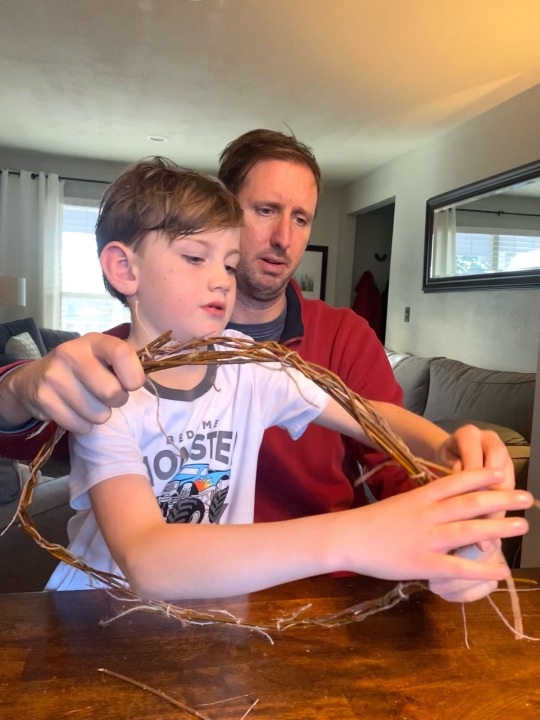

We used only foraged materials, and no adhesives. So when we are done looking at it, this wreath can go right into the compost. Everyone felt so proud of our project!

Art Appreciation was Bringing Home the Christmas Holly - mostly approved. For Music Appreciation we listened to several versions of The Holly & The Ivy.
I also had them make the fondant decorations for our annual Yule Log Cake.

Field Trips
We managed to complete about four holes of Holiday Lights Mini Golf before Jamie threw up in the bushes. Yikes. At least it was just once. All other field trips were canceled. 😂

1 note
·
View note
Text
Language, by current reckoning, first shows up for our species some seventy-five to one hundred thousand years after the emergence of anatomically modern Homo sapiens. It took vast stretches of cultural time for anatomically modern human beings to make language. Language then in turn went on to transform our capacities for thought and experience, capacities that are obviously grounded in our biology. Language and thought have become entangled in the sense that thought, insofar as it has tapped the resources of language, has become something different.
Recall that there is evidence (in the form of the cave paintings of Chauvet and Lascaux, for example, and as Collingwood reminds us) that graphical mark-making practices, including the making of pictures, are as deeply rooted in our prehistory, in our species history, as language is; pictoriality shows up on the scene, in the prehistorical record, at roughly the same time that language is thought to have shown up.
So maybe what goes for language and thought goes for pictures and vision. The idea is that vision is remade in the setting of pictoriality in something like the ways that thought is remade in the setting of language. Or, as we will consider in the next chapter, the way that talking is remade in the setting of the graphical activity of writing.
Alva Noë. 2023. The Entanglement: How Art and Philosophy Make Us What We Are. Princeton, NJ: Princeton University Press.
1 note
·
View note
Text
x-men OC: renée michele lebeau/li
template taken from here
General Information
Name: Renée Michele LeBeau/Li
Aliases: Invidia (codename); Lil Remy (nickname)
Age: (playable) baby - 25+ (born on April 9)
Gender: Genderfluid (she/they)
Species: Homo sapien superior aka Human Mutant
Ethnicity: 1⁄4 Québécois, 1⁄4 Han Chinese, ½ Cajun
Affiliation: the X-Men (usually; verse dependent)
Physical Appearance (FC: Janel Parrish)
Renée is a 5'6" (1.68 cm) young person who engages in regular physical activity. She’s lightly toned & has a relatively pale complexion (fortunately for her, she tends to tan rather than burn). Wanting to resemble her adopted mom Anna Marie, Renée began dying her naturally dark brown hair at the age of ten, starting with her bangs & progressing to her whole head of hair. Her wavy hair is often seen in neon colors. Like her father, Remy, she has red irises & black sclera, the former appearing to glow a little in the light. Renée loves fashion & her clothing aesthetic is punk goth: multiple piercings, flannels, graphic tees with ripped sleeves, chunky boots, chipped pastel-colored nail polish...
Personality
In a way, Renée takes after both of her biological parents. Most people tend to say she reminds them of her dad, Remy, because of her eyes, smirk, natural charm, confidence & tendency to flirt (for fun or manipulation). Others say she reminds them of her mother, Hestia, because of her hair (more so when undyed) & mannerisms. Some even say she gets her spunk & defensiveness from her other mom, Anna Marie. Regardless, Renée is her own person. She's a hedonist who secretly cares a lot about doing the right thing (even if she breaks some rules along the way).
History
Renée was conceived when Mr. Sinister used Remy LeBeau's DNA to impregnate Hestia while she was bonded to her symbiote. Sinister was curious to see if a child could be produced from this union & carried to term. Because Hestia was unconscious when this happened, she assumed that she was pregnant as a result of a nonconsensual encounter. Regardless, she wanted to start her own family, so she did. Everyone was surprised to meet the little baby with Remy's eyes & Hestia's...well, everything else. As time went on, Renée's powers developed. These helped her process & analyze info faster than most, so she was "homeschooled" (taught separately). She always looked up to her parents, so she put lots of effort into learning different kinds of hand-to-hand combat & gymnastics. In the meantime, she got into a great deal of trouble during her teenage years, especially when she'd shoplift (her dad had told her so many good stories about times he'd nearly get caught when he was with the Thieves Guild back in NOLA). She's started feeling conflicted about how mutants & regular people should interact, tired of wearing contacts or shades whenever she was out.
Powers / Abilities:
Static Energy Manipulation: this allows her a wide range of abilities, including generating/directing lightning, sparking fires, disrupting technology, attracting or repelling objects, clinging to solid objects while moving (wall-crawling/vertical running) & being invulnerable to electricity-based attacks.
Static Interference: Renée's body creates so much static that her mind is shielded from most telepaths.
High-Speed Reflexes: her reflexes, speed, coordination & thought processing are faster than the average human's. It's unknown if this is a consequence of her static energy manipulation. Without difficulty, she can run at 80 mph (128 kph), the speed of a car on the freeway.
Martial Arts: Her mom taught her how to throw a punch as a preteen. As she got older, Logan told her all about fighting dirty, like going for the nose/crotch/kidneys. As an adult, Renée is pretty well-versed in MMA.
Thievery: Her father has thoroughly educated her in the art of picking locks & pockets.
Trivia:
She has two piercings on each of her earlobes & one on her tongue.
Renée commonly refers to Hestia, her biological mother, as her "Mommy" & calls Anna Marie, her other mother, her "Mama".
Growing up, she had a crush on Daken, even though she saw Logan as her "grumpy Stab Grandpa".
Her favorite person, aside from her parents, is her Aunt 'Ro (Storm), who she typically addresses as "Ma Reine [My Queen]".
Being a daddy's girl has gotten her out of a lot of trouble.
Her accent is a mixture of her dad's (Cajun) & her adopted mom's (Mississippi).
She considers American English, Louisiana/Cajun French, European French, and Cantonese her "native" languages, while American Sign Language, Spanish & Arabic are "hobbies".
As an adult, she becomes one of the first mutants to ever grace the cover of a major magazine (Vogue, then Elle, then Sports Illustrated). She goes on to design a line of clothes, but she's more interested in modeling and crimefighting.
She always keeps some pins on her in case she has to pick a lock.
Renée is terrible with a bo staff, her father's primary weapon & she's kind of embarrassed about that.
Verses*
Brotherhood AU
General/Comics: I typically play her from any time during her childhood to her mid-20s. Her parents would be 50ish when she's an adult, so...yay, future X-Men shenanigans. If you play a canon that's usually an adult, we can do time travel or say that Renée's power super-aged her to adulthood. Either's fine.
I'm always cool with a plot where she's the Princess or Guildmaster of the Thieves' Guild (taking over from her dad)!
IRL AU: she can be written as a thief, underground fighter, up-and-coming model, or some combination of the three.
*I don’t want to write threads about live-action movies made after The Last Stand. I just don’t like their plots & some of the casting (plus the timeline confuses me SO MUCH)–anyway, I’m still down to RP with canons from then!
0 notes
Text
The Best Non-Fiction Book Recommendation

Non-fiction books are a valuable genre that showcases a window into the real world. Unlike their fictional counterparts, these books are rooted in truth and provide information that is factual. These books also provide insights and perspectives on a wide range of subjects. Non-fiction books can help us expand our knowledge, gain new perspectives, and explore the world around us. These books encompass a wide range of sub-topics, from biographies and memoirs to history and self-help.
Non-fiction books not only entertain but also enlighten the readers. It allows the reader to learn about different cultures, explore scientific discoveries, and understand historical events. Whether you are looking to learn something new, gain inspiration, or deepen your understanding of a subject. Non-fiction books are an invaluable resource that can broaden your horizons and provide a deeper understanding of the world that we live in.
At Recz, we provide you with the best book recommendations. Our book recommendation provides the best books that you should not miss out on. We provide information and synopsis on books that are the cream of the crop. Recz recommendations are top-notch. In this blog, we have compiled some of the best non-fiction books of all time. Read more:
Best Non-Fiction Book Recommendation
1. Sapiens: A Brief History of Humankind
Sapiens was a revolutionary book written by Yuval Noah Harari. It was first published in Hebrew in Israel in the year 2011. It received several nominations. One of the top nominations it received was Goodreads Choice Award Best Graphic Novel & Comics. This book is followed by Homo Deus.
This book focuses on Homo Sapiens. It surveys mankind’s history starting from Stone Age, and it covers the human journey up to the twenty-first century. Harari skillfully explores the major milestones that have shaped human history, from our early beginnings as hunter-gatherers to the present day, where we have become the dominant species on the planet.
This book covers a wide range of topics, including the cognitive revolution, the agricultural revolution, the rise of empires, the impact of religion, the development of science and technology, and the challenges we face in the modern world. Sapiens: A Brief History of Humankind is a must-read non-fiction novel. This book has received a rating of 4.7 out of 5.
2. The Immortal Life of Henrietta Lacks
It is one of the most remarkable nonfiction novels. It is penned by author Rebecca Skloot. This gripping account delves into the true story of Henrietta Lacks, an African-American woman whose cells were taken without her consent in the 1950s and became instrumental in scientific research and medical breakthroughs.
Skloot traces the journey of Henrietta’s cells, which were called HeLa cells. They played a pivotal role in advancing medicine. This includes the development of the polio vaccine, cancer research, and countless other scientific discoveries. This book also sheds light on the ethical and moral dilemmas surrounding medical consent and the exploitation of downtrodden communities. The Immortal Life of Henrietta Lacks is one of the must-reads. It is one of the top Recz recommendations. It received a rating of 4.1 out of 5 on Goodreads.
3. Between the World and Me
Between the World and Me is a powerful non-fiction book written by Ta-Nehisi Coates. This book is a heartfelt and deeply personal work that takes the form of a letter from the author to his teenage son. It grapples with the realities of being a Black man in America.
Coates explores the profound impact of systemic racism and white supremacy on the Black experience. This book reflects on his own life, the history of racial injustice in the U.S., and the ongoing struggle for equality. Coates shares his fears, hopes, and insights with his son. This works as a raw and unfiltered account of the challenges faced by Black individuals in a society that often fails to recognize their humanity. This book has a rating of 4.4 out of 5 on Goodreads.
4. The Sixth Extinction: An Unnatural History
The Sixth Extinction: An Unnatural History is a thought-provoking non-fiction book. It is authored by Elizabeth Kolbert. This compelling book deals with the themes of the alarming reality of mass extinction events and their impact on the planet. Kolbert delves into the current state of Earth’s biodiversity and the growing consensus among scientists that we are in the midst of a sixth mass extinction that is caused mainly due to human activities.
In this book, Kolbert talks about the various ways in which human actions, like habitat destruction, pollution, climate change, and the introduction of invasive species, are diving several species to the brink of extinction. Through meticulous research and firsthand reporting, Kolbert travels to different parts of the world. She examined the effects of extinction on diverse ecosystems and species.
From coral reefs and tropical rainforests to the melting Arctic and vanishing amphibians, she provides a comprehensive overview of the global ecological crisis. The Sixth Extinction: An Unnatural History is one of the best books that deal with the concepts of endangered ecosystems. It is an excellent book recommendation. The Sixth Extinction has a rating of 4.2 on Goodreads.
0 notes
Text
AI and the future of humanity | Yuval Noah Harari at the Frontiers Forum
See on Scoop.it - Education 2.0 & 3.0
youtube
loadYouTubePlayer('yt_video_LWiM_LuRe6w_JG2DYEwgvDewhYBc');
In this keynote and Q&A, Yuval Noah Harari summarizes and speculates on 'AI and the future of humanity'. There are a number of questions related to this discussion, including: "In what ways will AI affect how we shape culture? What threat is posed to humanity when AI masters human intimacy? Is AI the end of human history? Will ordinary individuals be able to produce powerful AI tools of their own? How do we regulate AI?"
The event is was organized and produced by the Frontiers Forum, dedicated to connecting global communities across science, policy, and society to accelerate global science related initiatives.
It was produced and filmed with support from Impact, on April 29, 2023, in Montreux, Switzerland.
Subscribe to Yuval’s Channel!
@YuvalNoahHarari
Socials & Website
Twitter: https://twitter.com/harari_yuval
Instagram: https://www.instagram.com/yuval_noah_...
Facebook: https://www.facebook.com/Prof.Yuval.N...
Youtube: @YuvalNoahHarari
Website: https://www.ynharari.com/
Yuval Noah Harari is a historian, philosopher, and the bestselling author of 'Sapiens: A Brief History of Humankind' (2014), 'Homo Deus: A Brief History of Tomorrow' (2016), '21 Lessons for the 21st Century' (2018), and the series 'Sapiens: A Graphic History' (launched in 2020, co-authored with David Vandermeulen and Daniel Casanave).
Yuval Noah Harari speaks internationally and teaches at the Hebrew University of Jerusalem. On this channel you can see his interviews, lectures, and public conversations with prominent leaders and influencers, — including Mark Zuckerberg, Natalie Portman, Christine Lagarde, Chancellor Kurz of Austria, Jay Shetty, and Russell Brand.
0 notes
Photo

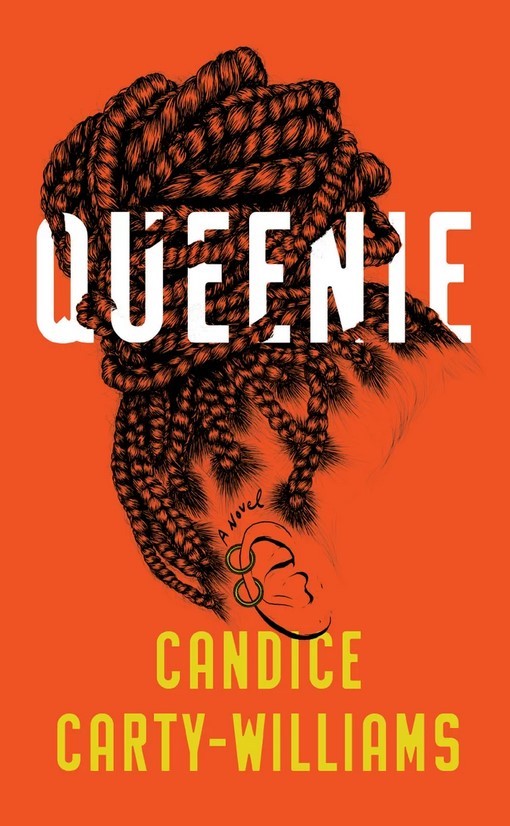
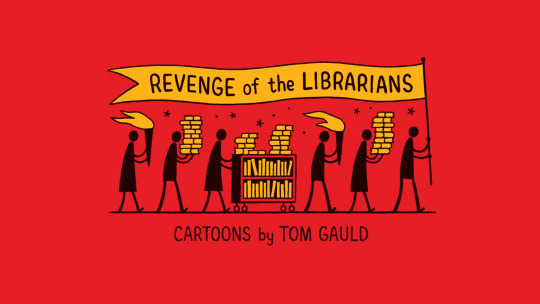
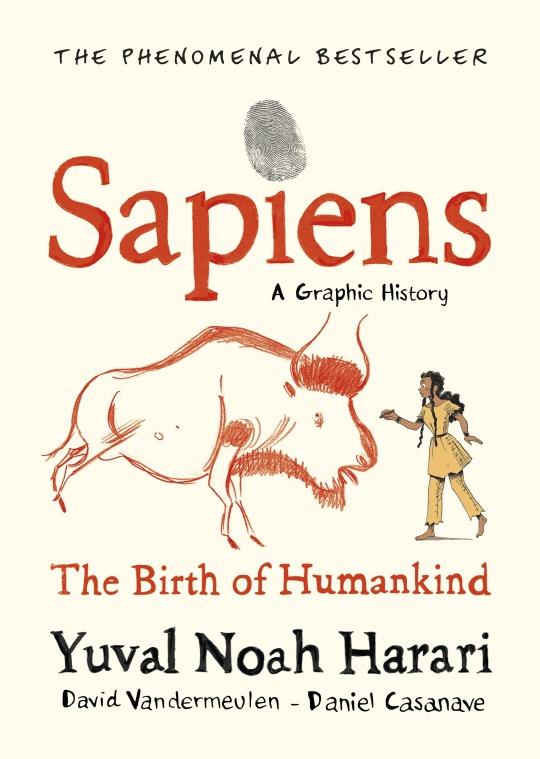
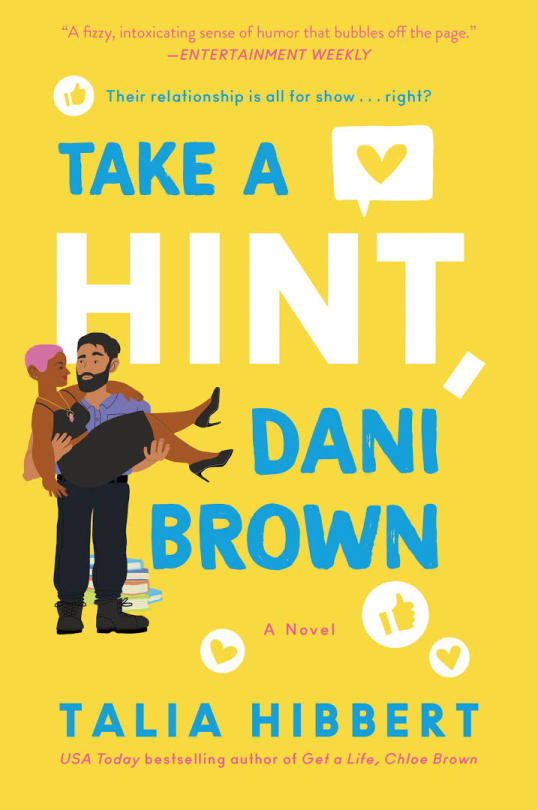
Wrap Up March 2023
❤️ As Good As Dead - Holly Jackson (A Good Girl’s Guide to Murder #3) : yup, the third book and just as good as the other two! Couldn’t stop reading till the last page!
Queenie - Candice Carty-Williams : didn’t plan beforehand to take this with me from the library but stumbled upon it and gave it a try... this was a really nice read :)
❤️ Revenge of the Librarians - Tom Gauld : I immediately fell in love with this bookish cartoon book! Also the cover is so pretty with the red and gold! An absolute must have for book and library lovers and librarians!
Sapiens: A Graphic History V1 - Yuval Noah Harari : I tried the book years ago but gave up on it, but this graphic novel really works! It reads easily and the graphics and drawings are really fun!
Take A Hint, Dani Brown - Talia Hibbert : bought this secondhand... it was good but did not win me over completely...
1 note
·
View note
Text
[Download PDF/Epub] History: From the Dawn of Civilization to the Present Day - Adam Hart-Davis
Download Or Read PDF History: From the Dawn of Civilization to the Present Day - Adam Hart-Davis Free Full Pages Online With Audiobook.
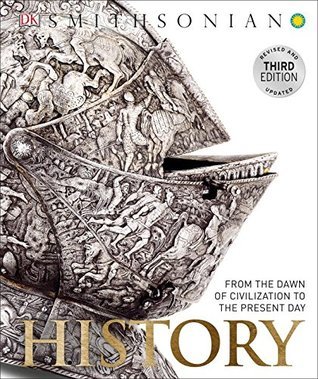
[*] Download PDF Here => History: From the Dawn of Civilization to the Present Day
[*] Read PDF Here => History: From the Dawn of Civilization to the Present Day
History tells the story of mankind from prehistory to the present day using a unique visual approach, filled with timelines, images of artifacts, photography, graphics, and more. Now in its third edition, this much-loved classic has been revised and updated to bring today's current events into wider context and includes all new material on the global recession, green technologies, and the Internet and social media.This fully revised and updated third edition of History includes:?????Inventions, discoveries, and ideas that have shaped world history. ?????A look at human achievement through artifacts, painting, sculpture, and architecture ?????An examination of humankind in context as part of the natural world. ?????Eyewitness accounts and biographies of key figures. ?????A comprehensive timeline chronicling the key events of the countries of the world. ?????Key contemporary issues, political developments, changes in leadership, and more. Homo sapiens have remained the same species,
0 notes
Text
(Download) Sapiens: A Graphic History, Volume 1 - The Birth of Humankind - David Vandermeulen
Download Or Read PDF Sapiens: A Graphic History, Volume 1 - The Birth of Humankind - David Vandermeulen Free Full Pages Online With Audiobook.
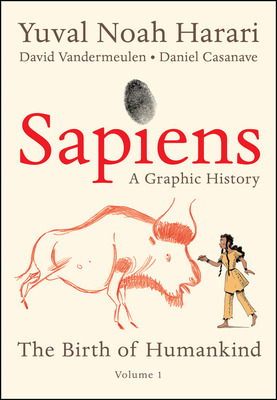
[*] Download PDF Visit Here => https://forsharedpdf.site/54110137
[*] Read PDF Visit Here => https://forsharedpdf.site/54110137
A hardcover edition of the first volume of the graphic adaptation of Yuval Noah Harari's smash #1 New York Times and international bestseller recommended by President Barack Obama and Bill Gates, with gorgeous full-color illustrations and concise, easy to comprehend text for readers of all ages.One hundred thousand years ago, at least six different species of humans inhabited Earth. Yet today there is only one?homo sapiens. What happened to the others? And what may happen to us?In this first volume of the full-color illustrated adaptation of his groundbreaking book, renowned historian Yuval Harari tells the story of humankind?s creation and evolution, exploring the ways in which biology and history have defined us and enhanced our understanding of what it means to be ?human.? From examining the role evolving humans have played in the global ecosystem to charting the rise of empires, Sapiens challenges us to reconsider accepted beliefs, connect past developments with contemporary
0 notes
Text
What is Web 3.0 and 4.0 the upcoming technology
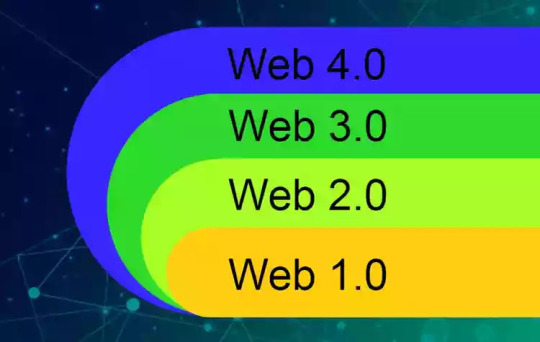
The development of the web or the internet in the world has been divided into different phases, which we write as web x.0.
Web History
In the 21st century, the Web is the most significant and effective technology. Its nature, structure, and way of usability are changing continuously.
The Web’s evolution has been stratified into different stages that we generally represent in the Web X.0 pattern which is based on what they do and who or what is at the main of their action.
From the beginning till now, the stages are denoted as Web 1.0, Web 2.0, Web 3.0, Web 4.0, and so on.
Web 1.0: The emergence of the Web
Web 1.0 is called the first stage of the World Wide Web’s evolution. It is also called the traditional web practice. People can read and interact with the information posted on servers using a standard web browser through the Internet. That is why it is called the “Information-Centric” stage of the World Wide Web.
The foundation of the Web was set in this stage or phase. The HTTP, HTML, XML, Server side script, etc. were the main development and improvement in Web 1.0.
Web 1.0 sites were using the static pages, server-side files for the database, frames and tables with spacer gif, HTML form via email, etc. as common design elements.
Web 2.0: The interaction with the Web
Web 2.0 is the second phase of the World Wide Web evolution which was about user-generated information or content consumption and sharing. That is why it is called the “User-Centric” phase of the Web evolution.
Web 2.0 allowed and encouraged the people or the users to create, share, and distribute information or content either in text or image in the virtual community. Many new web practices, technologies, and applications developed in this social revolutionary phase with users’ participation e. g. – blogs, social networking sites, Wikipedia, communication tools, Software as a service (SaaS), tagging of websites, dynamic content(responsive to user input), RSS, Podcasting, keyword search, etc.
The spamming, trolling, hate content, etc. also originated and increased in the Web 2.0 phase due to the freedom to contribute with serious debate and collaboration.
Many web designing skills and information is available at Showing posts with the label Web Designing.
Web 3.0: The emergence of AI And Big Data
Web 3.0 is the third stage or phase of the World Wide Web which is also known as the “Semantic Web or Meaningful Web”. The purpose of the Semantic Web is to make the Web data machine-readable which was previously only readable by humans. Thus, it allows for more sophisticated and advanced interaction between devices and users intelligently.
We have access to a huge amount of structured data or big data using different software due to Web 3.0 technologies. Web 3.0 is characterized by intelligence and efficiency due to the use of AI technology which generated a new way of data-driven marketing and production of the application. The 3D graphics, Virtual Reality, Blockchain-based cryptocurrency, Secure data ownership, etc. are the characteristics of Web 3.0.
Many new significant developments and advancements are taking place which results in modern and effective Web 3.0 applications, technologies, and platforms. For example – e-Chat, Storj(blockchain-based secure file storing), Sapien(filters correct data), Ethlance(Ethereum blockchain technology), etc.
The Resource Description Framework (RDF) or XML (eXtensible Markup Language), JavaScript Object Notation for Linked Data (JSON-LD) techniques are used for describing the machine-readable semantic data. InterStellar Files System (IPFS) is used to create a peer-to-peer, faster, efficient, secure, and transparent file system.
Web 3.0 is also known as the Internet 3.0 and it is now become an integral part of our daily life due to the habitual of the Internet in human life by connecting to the web always, anytime, and anywhere.
Web 4.0: The advancement of human intelligence
Web 4.0 is the next generation of the Web with highly advanced and sophisticated applications and technology.
Web 4.0 is known as the symbiotic web due to the symbiotic interaction between man and machine. Web 4.0 is also called as “read-write-execute” web. Web 4.0 concept is still underway so there is no real and uniform definition for this yet.
Web 4.0 is also known as the “intelligent Web” or “smart Web.” The main objective of Web 4.0 is to advance the co-relation between human intelligence and machine sophistically at the highest level, for producing a fully interactive high performance, fast internet or web experience with the top quality information. For example – in a Web 4.0 application, intelligent software agents or AI will process information and communicate with the application system or other software agents or AI on behalf of you to solve your problems. Thus it automates your tasks and decreases your workload.
Web 4.0 applications represent technology about mobility and the voice interaction between user and machine. It makes a comfortable and effective way for accessing the application for tech and non-tech people.
Web 4.0 can assist us to protect the environment and create an eco-friendly environment for human beings by making digitally efficient smart cities.
Web 4.0 will change both business and medical sectors. RFID tags are added to products to enhance customer experiences. Medicine will eventually enable human-machine connection, giving patients the ability to heal using symbiotic systems.
Web 4.0 application can analyze and take better task-oriented decisions and suggest solutions for solving your problem
Source: infotokri
#phpframework#seo#softwaredeveloper#Software_application_development#Webdesign#webdeveloper#webdevelopment#php developers#php
1 note
·
View note
Text
Comic Concierge - Graphic Thoughts #3: Green Lantern: Earth One Vol. 2, Guantanamo Voices, Sapiens: A Graphic History
Comic Concierge – Graphic Thoughts #3: Green Lantern: Earth One Vol. 2, Guantanamo Voices, Sapiens: A Graphic History
#Comics #GraphicNovels #GreenLantern
Graphic Thoughts continues this week showing the variety of the comics medium. We have superheroes saving the world, journalists fighting for important causes, and the history of humans being explored.
00:49 – Green Lantern: Earth One Vol. 2,
05:17 – Guantanamo Voices
12:05 – Sapiens: A Graphic History
Follow me on Twitter: @ConciergeComic / Instagram:…
View On WordPress
0 notes
Text
Read Book Sapiens: A Graphic History, Volume 2 - The Pillars of Civilization PDF BY David Vandermeulen
Download Or Read PDF Sapiens: A Graphic History, Volume 2 - The Pillars of Civilization - David Vandermeulen Free Full Pages Online With Audiobook.

[*] Download PDF Here => Sapiens: A Graphic History, Volume 2 - The Pillars of Civilization
[*] Read PDF Here => Sapiens: A Graphic History, Volume 2 - The Pillars of Civilization
0 notes